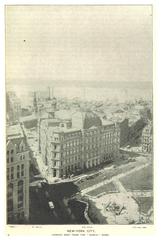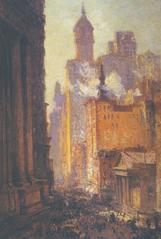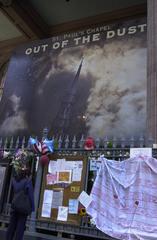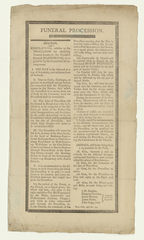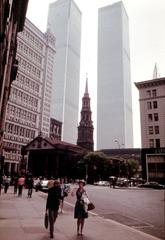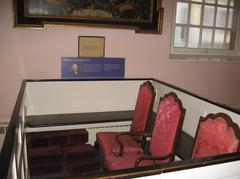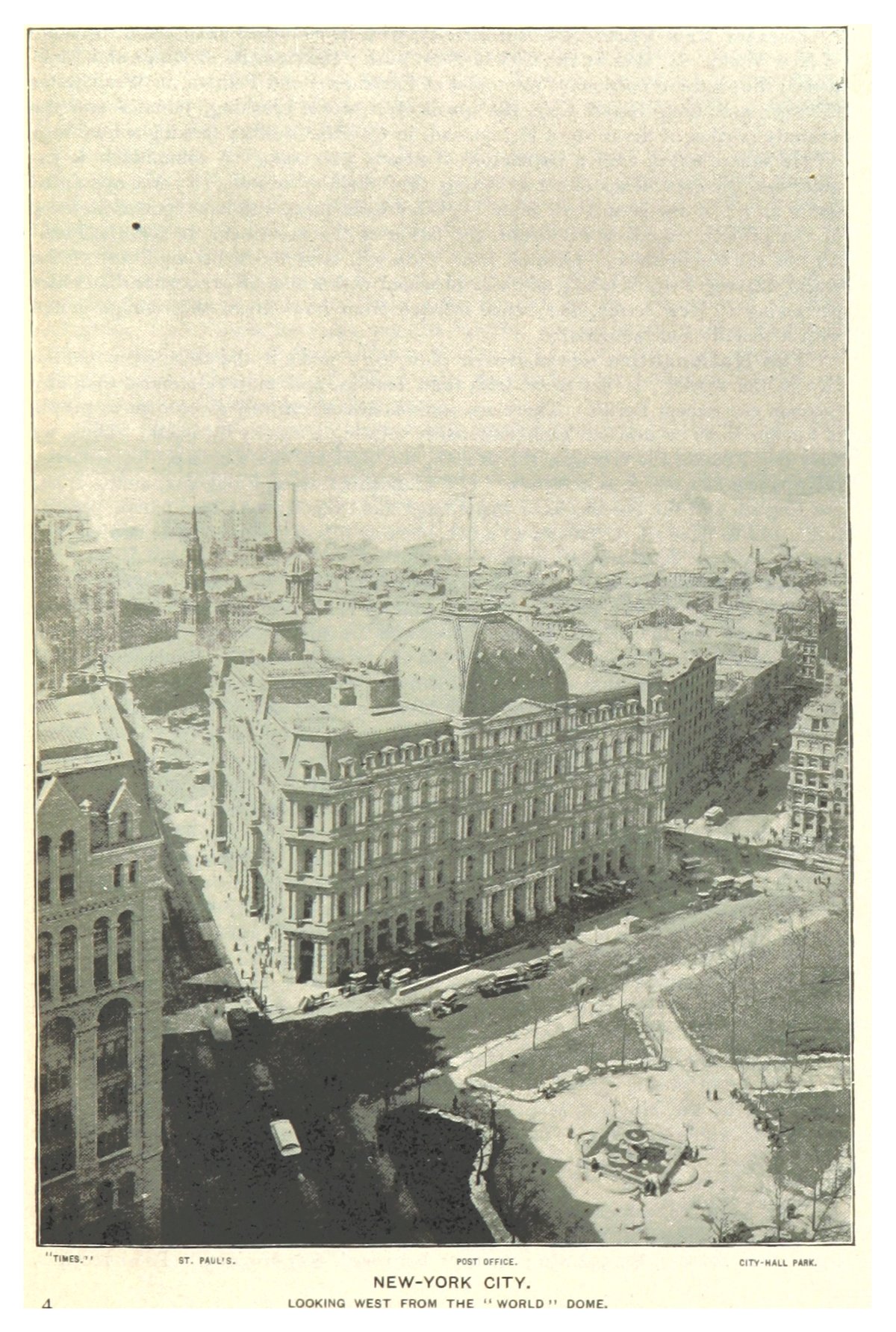
St. Paul’s Chapel: Visiting Hours, Tickets, and Guide to New York City’s Historic Sanctuary
Date: 14/06/2025
Introduction
St. Paul’s Chapel, nestled in the heart of Lower Manhattan, is one of New York City’s most enduring and significant landmarks. As the oldest surviving church building in Manhattan and the oldest public building in continuous use in the city, St. Paul’s embodies over 250 years of American history, architectural innovation, and community resilience. Its legacy stretches from colonial times through the American Revolution, to standing as a beacon of hope after the September 11 attacks. Today, the chapel remains open to all, providing a peaceful retreat, rich historical insights, and vibrant community programming (Trinity Church NYC; 911 Ground Zero).
This comprehensive guide details St. Paul’s Chapel’s origins, architectural features, role in American history, visiting hours, ticketing policies, accessibility, and the many ways you can experience its powerful story.
Table of Contents
- Introduction
- Colonial Foundations and Early Years
- Surviving the Revolutionary Era
- George Washington and the Founding Fathers
- Architectural Heritage
- Community Role and Service
- September 11, 2001: “The Little Chapel That Stood”
- Visiting Information: Hours, Tickets, and Accessibility
- What to See: Highlights and Memorials
- Nearby Attractions
- Visitor Tips
- Frequently Asked Questions
- Conclusion
- References
Colonial Foundations and Early Years
St. Paul’s Chapel, completed in 1766 at 209 Broadway, was built as a “chapel-of-ease” for Trinity Church parishioners who found it difficult to reach the main church in Lower Manhattan. The land was granted by Queen Anne of Great Britain, and the building reflected the ambitions of a growing colonial city (Trinity Church NYC; City Beautiful Blog). At the time, the Hudson River’s shoreline was only steps away from the chapel’s original entrance, highlighting how Manhattan’s geography has since changed (911 Ground Zero).
Surviving the Revolutionary Era
The chapel’s early history was marked by the Great Fire of 1776, which devastated much of New York City, including the original Trinity Church. St. Paul’s survived, reportedly thanks to a bucket brigade drawing water from the Hudson River (CBS News). During British occupation, the chapel was used by both British military leaders and, later, American patriots (Eagle Transfer). A fire bucket discovered in the rafters centuries later is believed to be an artifact from this era.
George Washington and the Founding Fathers
After the American Revolution, New York City served briefly as the nation’s capital. On April 30, 1789, following his inauguration at Federal Hall, President George Washington attended services at St. Paul’s Chapel. His pew is preserved and remains a highlight for visitors, along with the 18th-century Great Seal of the United States (Trinity Church NYC; Tour by Transit). The chapel continued to serve both prominent leaders and ordinary citizens during this formative period (City Beautiful Blog).
Architectural Heritage
St. Paul’s Chapel is a striking example of Colonial Georgian architecture, inspired by James Gibbs’ St Martin-in-the-Fields in London. The building features a Manhattan mica-schist exterior with brownstone details, and its spire—added between 1794 and 1796—is modeled on classical forms (Wikipedia; Spotting History). Notably, the interior columns are fashioned from whole pine tree trunks, faced with fluted wood casings—an innovative use of local materials that has endured for centuries (Untapped Cities). The altar was designed by Pierre L’Enfant, later the planner of Washington, D.C. (City Beautiful Blog).
The restrained interior, with its flat ceiling and cut-glass chandeliers, reflects colonial ideals of clarity and proportion. Major restorations have preserved these original features, most recently with careful conservation of the portico’s St. Paul statue and the churchyard’s gravestones (Untapped Cities).
Community Role and Service
Beyond its architecture and history, St. Paul’s Chapel has always been a center for community and sanctuary. After the 1776 fire, it provided relief to homeless New Yorkers. Across the centuries, it has welcomed people of all backgrounds, hosted interfaith gatherings, and offered comfort during crises (Trinity Church NYC; CBS News). The churchyard is a peaceful oasis, with pre-Revolutionary War graves and the “Bell of Hope,” rung annually on September 11.
Today, St. Paul’s hosts free concerts, cultural events, and community programs, continuing its mission of service and outreach (Tour by Transit).
September 11, 2001: “The Little Chapel That Stood”
St. Paul’s Chapel’s most profound modern chapter came after the September 11 attacks. Located less than 100 yards from the World Trade Center, the chapel miraculously survived without damage, protected in part by a large sycamore tree in its churchyard (911 Memorial). In the aftermath, St. Paul’s became a sanctuary and relief center for thousands of rescue workers, with over 5,000 volunteers providing meals, counseling, and comfort (CBS News). The chapel’s fence became a spontaneous global memorial, adorned with messages and mementos from around the world (EverGreene).
Artifacts and displays from this period remain on view inside the chapel, and the “Bell of Hope” continues to symbolize remembrance and resilience.
Visiting Information: Hours, Tickets, and Accessibility
Visiting Hours:
- Monday to Saturday: 9:00 AM – 5:00 PM
- Sunday: 12:00 PM – 5:00 PM
(Hours may vary on holidays or for special events. Always check the official website before your visit.)
Admission and Tickets:
- Free admission; no tickets required for general visits.
- Donations are welcome to support preservation and programming.
Guided Tours:
- Free guided tours are generally offered weekdays at 11:00 AM and 2:00 PM.
- Group tours can be arranged by appointment.
Accessibility:
- Fully wheelchair accessible, with ramps and accessible restrooms.
- Contact visitor services in advance for special accommodations.
Etiquette:
- Modest dress and respectful silence are requested inside the sanctuary.
What to See: Highlights and Memorials
- The Portico and Steeple: Observe the classical entrance and elegant spire from Broadway.
- Timber Columns: Inside, view the rare 18th-century columns made from tree trunks.
- Washington Pew: See the preserved pew where George Washington worshipped.
- 9/11 Memorial Displays: Explore artifacts, banners, and the “Bell of Hope.”
- Churchyard: Enjoy the tranquil graveyard and historic monuments.
- Artistic Features: Admire original wooden doors, silver chandeliers, and the statue of General Richard Montgomery.
Nearby Attractions
St. Paul’s Chapel is ideally located for exploring Lower Manhattan. Walk to nearby sites such as:
- 9/11 Memorial & Museum
- One World Observatory
- Trinity Church
- Federal Hall National Memorial
- Woolworth Building
- African Burial Ground National Monument
The chapel is easily reached by subway (1, 2, 3, 4, 5, A, C, R, W, J, Z lines) and several bus routes (OnBoard Tours).
Visitor Tips
- Best Times: Visit on weekday mornings or early afternoons to avoid crowds.
- Photography: Allowed, but please be respectful, especially during services or quiet reflection.
- Amenities: Restrooms and a small gift shop are available.
- Security: Expect routine security checks, especially during special events.
- Group Visits: Contact the chapel in advance for group arrangements.
Frequently Asked Questions
What are the visiting hours?
Monday–Saturday: 9:00 AM–5:00 PM; Sunday: 12:00 PM–5:00 PM. Hours may vary; check the official website.
Is there an admission fee?
No, admission is free. Donations are appreciated.
Are guided tours available?
Yes, free tours are offered on weekdays at set times. Group tours can be booked in advance.
Is the chapel wheelchair accessible?
Yes, with ramps and accessible restrooms.
Do I need a reservation?
Not for individuals, but group visits should be arranged ahead of time.
What else is nearby?
The chapel is close to the 9/11 Memorial, Trinity Church, Federal Hall, and more.
Conclusion
St. Paul’s Chapel stands as a living monument to New York City’s rich history, architectural achievement, and enduring spirit of community and hope. Its story stretches from the American Revolution, through the rebuilding after the Great Fire, to its role as a place of solace after September 11. Whether you’re a history enthusiast, architecture lover, or traveler seeking a moment of reflection, St. Paul’s offers a unique and enriching experience in the heart of Manhattan.
Plan your visit by checking current hours and tour options on the official website, and consider enhancing your experience with the Audiala app for immersive tours and historical updates. Make St. Paul’s Chapel a highlight of your New York City journey.
